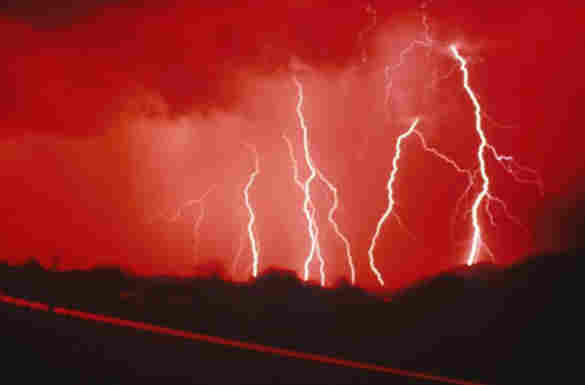|

Lightning during a thurderstorm
|
Thunderstorms are generated by temperature imbalances
in the atmosphere and a violent example of convection.
Instability causes convective overturning of the layers of air, with
heavier, denser layers sinking to the bottom and the lighter, warmer air
rising rapidly.
Lightning is a build up of electrons concentrating
and discharging static electricity during a thunderstorm. As the
thunderstorm develops, interactions of charged particles produce an
intense electrical field within the cloud. A large positive charge is
usually concentrated in the frozen upper layers of the cloud, and a
large negative change, along with a smaller positive area, is found in
the lower portions.
Thunder is the sound produced by explosive
expansion of air super heated by a lightning stroke. When lightning is
close by, the thunder sounds like a sharp crack. More distant strokes
produce growling and rumbling noises. Because the speed of light is
about a million times that of sound, a lightning bolt is seen
before the sound of the thunder.
|